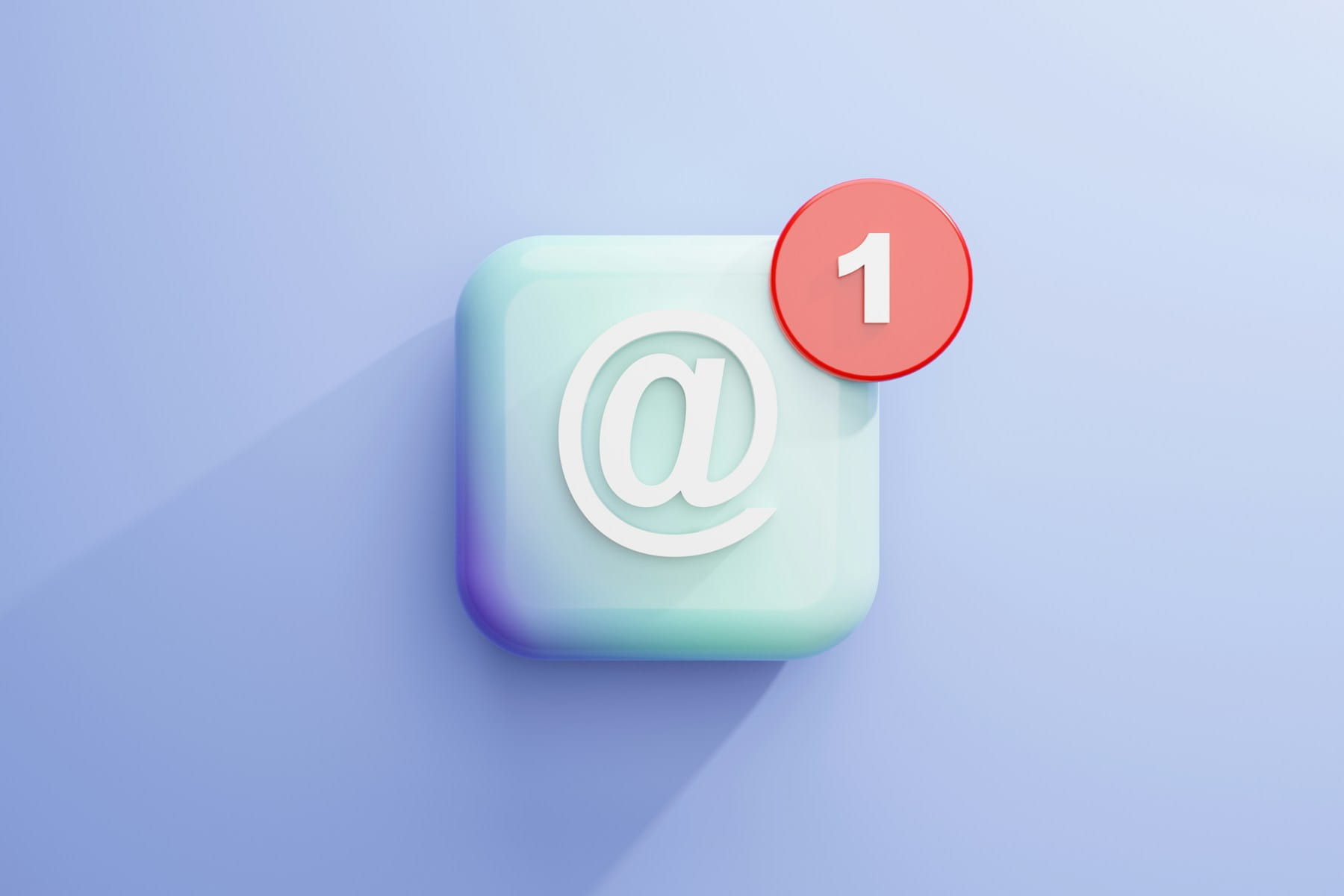When you send your marketing emails matters more than most people realize. But here's the thing—most advice about email timing is either outdated or completely wrong for your specific audience.
You've probably heard the standard recommendations: "Send on Tuesday at 10 AM" or "Thursday mornings work best." While these suggestions aren't entirely useless, they miss the bigger picture. Your subscribers aren't carbon copies of each other, and treating them as such leaves money on the table.
The real question isn't just when to send emails. It's how to figure out when YOUR audience actually opens and engages with messages. And trust me, there's a world of difference between generic best practices and data-driven timing strategies that actually work.
Table of contents
- Why timing matters more than you think
- The baseline: What the data actually shows
- Day of the week performance breakdown
- Time of day analysis
- Industry-specific timing patterns
- The timezone problem most marketers ignore
- Testing your way to better timing
- Common timing mistakes that kill engagement
- Advanced strategies for timing optimization
- The role of automation in send time optimization
- Measuring what matters: Beyond open rates
- Future-proofing your email timing strategy
Why timing matters more than you think
Email timing isn't just about convenience—it's about psychology and human behavior patterns. When someone receives your email at the wrong moment, several things can happen, none of them good.
First, they might glance at it quickly and decide to "read it later." We all know how that story ends. Later never comes, and your carefully crafted message gets buried under an avalanche of newer emails.
Second, they might feel annoyed by the poor timing. Send a promotional email at 6 AM on a Sunday, and you're not just missing the mark—you're actively damaging your relationship with subscribers.
Third, and perhaps most importantly, poor timing creates a cascade effect on your sender reputation. Low engagement rates signal to email providers that your content isn't valuable, which can land future emails in spam folders.
But here's where it gets interesting (and where most marketers get it wrong). The "best" time varies dramatically based on:
- Your audience's demographics and lifestyle patterns
- The type of content you're sending
- Seasonal and cultural factors
- Your subscribers' interaction history with your brand
The baseline: What the data actually shows
Let's start with what large-scale data analysis reveals about email timing patterns. Recent studies analyzing millions of email campaigns show some clear trends, though they come with important caveats.
The most comprehensive data points to Tuesday through Thursday as the strongest performing days for most email campaigns. Monday shows surprisingly strong performance for certain types of content, particularly newsletters and informational emails. Friday performance varies significantly by industry—B2B emails often struggle on Fridays, while consumer brands sometimes see solid engagement.
Weekend performance tells a more nuanced story. While overall volume drops significantly on weekends, the emails that do get sent often face less competition for attention. Some brands report higher engagement rates on weekends, though with lower absolute numbers.
Here's the catch: these patterns reflect aggregated data across millions of different audiences, industries, and content types. Your mileage will definitely vary.
Day of the week performance breakdown
Monday: The fresh start advantage
Monday emails benefit from what we might call the "fresh inbox phenomenon." People return to work with somewhat cleared mental space and often tackle their inbox first thing. Newsletter content and educational emails tend to perform particularly well on Mondays.
However, Monday mornings can be chaotic for many professionals. The sweet spot often falls in the late morning or early afternoon, once people have settled into their week.
Tuesday through Thursday: The reliable workhorses
These mid-week days consistently show strong performance across industries. Tuesday often edges out the competition slightly, possibly because people have fully transitioned into work mode without the end-of-week distractions that affect Thursday and Friday.
Wednesday can be tricky—it's when email fatigue from the week starts to set in, but it's also when people are most settled into their weekly routines.
Friday: The wild card
Friday email performance depends heavily on your audience and content type. Professional services and B2B companies often see declining engagement as people mentally check out for the weekend. But consumer brands, especially those in entertainment, food, or leisure sectors, sometimes find Friday afternoon success with weekend-focused content.
Weekends: Quality over quantity
Weekend email volume drops by 60-70% for most industries, creating an opportunity for brands willing to test these waters. The subscribers who do engage on weekends often show higher levels of engagement—they're choosing to read marketing emails during their personal time, which suggests stronger interest.
Time of day analysis
Email timing research reveals some fascinating patterns about when people actually check their inboxes and engage with marketing content.
Morning patterns (6 AM - 12 PM)
Early morning email checking is common, but the optimal send time depends on your audience's morning routine. Business professionals often scan emails between 7-9 AM, but they're frequently in "triage mode"—quickly sorting important from unimportant messages.
The 10 AM - 12 PM window shows consistent performance across many industries. People have settled into their day but haven't yet hit the afternoon energy slump.
Afternoon dynamics (12 PM - 6 PM)
Lunch hour (12-1 PM) can be golden for certain types of content, particularly consumer-focused emails. People have a few minutes to browse during their break and are more open to non-work-related content.
The 2-4 PM window often works well for B2B content, as it hits the post-lunch period when people are looking for brief distractions or catching up on non-urgent communications.
Late afternoon (4-6 PM) shows interesting patterns. Some audiences check email as they wrap up their workday, while others are completely focused on finishing tasks and ignore non-essential messages.
Evening engagement (6 PM - 10 PM)
Evening hours reveal the most dramatic audience differences. Consumer brands often see strong performance in the 6-8 PM window, when people are transitioning from work to personal time.
But here's where it gets tricky—evening email checking habits vary enormously by age, lifestyle, and personal preferences. Some people religiously check email until bedtime, while others completely disconnect after work hours.
Industry-specific timing patterns
Different industries see markedly different optimal timing patterns, reflecting the unique characteristics of their audiences and the nature of their content.
Retail and e-commerce timing
Consumer shopping behavior drives timing patterns for retail emails. Weekday lunch hours often show strong performance for flash sales and promotional content. Thursday and Friday afternoons can work well for weekend-focused promotions.
Seasonal variations matter enormously for retail. Back-to-school timing differs from holiday shopping patterns, and summer emails often perform differently than winter campaigns.
B2B and professional services
Business-focused emails generally perform best during standard working hours, but with some important nuances. Tuesday and Wednesday mornings consistently show strong performance, as does the Tuesday-Thursday afternoon window.
Avoid Monday mornings (people are catching up from the weekend) and Friday afternoons (people are winding down). Industry events and conference schedules can also impact timing—sending emails during major industry conferences often results in poor performance.
Healthcare and wellness
Healthcare-related emails show unique timing patterns. Early morning and evening hours often work well, as people think about health and wellness during personal time rather than work hours.
Wellness content can perform surprisingly well on weekends, when people have more time to engage with longer-form health information.
Financial services
Financial emails need to balance urgency with convenience. Mid-week mornings often work best for investment updates and financial planning content. End-of-month and end-of-quarter timing can significantly impact performance for certain types of financial communications.
Education and training
Educational content shows interesting timing patterns. Mid-week mornings work well for professional development emails targeting working adults. Evening hours can be effective for continuing education and skill-building content.
Academic calendar timing matters enormously—emails perform differently during semester start times, finals periods, and summer breaks.
The timezone problem most marketers ignore
Timezone management represents one of the most overlooked aspects of email timing strategy. Many marketers send campaigns based on their own timezone, completely ignoring where their subscribers actually live.
Single timezone vs. multi-timezone strategies
If your audience concentrates in one timezone, life is relatively simple. But most businesses serve subscribers across multiple timezones, creating complex timing decisions.
The naive approach involves picking one "best" time and sending to everyone simultaneously. This guarantees that most of your subscribers receive emails at suboptimal times.
More sophisticated approaches involve segmenting audiences by timezone and sending campaigns at the optimal local time for each segment. Advanced email platforms can automate this process, but it requires careful setup and ongoing management. For comprehensive strategies on implementing effective audience segmentation beyond just timezone considerations, explore our detailed guide on email segmentation.
International considerations
Global audiences introduce additional complexity beyond simple timezone math. Cultural factors influence email checking habits, business hours vary by country, and local holidays can dramatically impact engagement.
European audiences often show different timing patterns than North American subscribers. Asian markets have their own unique engagement patterns, influenced by different work cultures and mobile usage habits.
Testing your way to better timing
Generic timing advice only gets you so far. The most successful email marketers develop timing strategies based on their specific audience data through systematic testing.
Setting up effective timing tests
Timing tests require careful design to produce actionable results. Simple A/B tests comparing two send times can provide useful data, but more sophisticated approaches yield better insights.
Split your audience into representative test segments, ensuring each group receives similar content at different times. Track not just open rates, but click-through rates, conversion rates, and unsubscribe rates.
What metrics actually matter
Open rates get most of the attention in timing discussions, but they're not the whole story. Click-through rates often provide better insights into actual engagement, as they reflect subscribers who not only opened the email but found it compelling enough to take action.
Conversion rates matter most for commercial emails. An email with a lower open rate but higher conversion rate is objectively more valuable than one with impressive open rates but poor business results.
Don't ignore negative metrics like unsubscribe rates and spam complaints. Emails sent at poor times often generate higher unsubscribe rates, even if the content itself is solid.
Interpreting test results
Timing test results require careful interpretation. Small differences might not be statistically significant, and seasonal factors can skew results.
Look for consistent patterns across multiple tests rather than optimizing based on single test results. Timing preferences can shift over time, so regular testing is more valuable than one-time optimization efforts.
Common timing mistakes that kill engagement
Most email timing failures fall into predictable patterns. Recognizing these mistakes can help you avoid them and improve your timing strategy from the start.
The "best practice" trap
Following generic best practices without considering your specific audience is perhaps the most common timing mistake. What works for a B2B software company probably won't work for a consumer fitness brand.
Best practices provide a starting point, not a final answer. Use them as hypotheses to test, not rules to follow blindly.
Ignoring audience feedback signals
Your subscribers constantly provide feedback about timing preferences through their behavior, but many marketers ignore these signals. Declining open rates over time might indicate timing issues rather than content problems.
Pay attention to patterns in engagement timing. If subscribers consistently engage with your emails hours after they're sent, it might indicate your send times are off.
Over-optimizing based on limited data
Small sample sizes can lead to misleading conclusions about timing effectiveness. A single successful campaign sent at an unusual time doesn't establish a new optimal send time.
Similarly, short-term tests might not capture seasonal variations or longer-term audience behavior changes.
Failing to account for content type
Different types of email content have different optimal timing patterns. Promotional emails, newsletters, transactional messages, and educational content all perform best at different times.
A timing strategy that works for weekly newsletters might fail completely for flash sale announcements.
Advanced strategies for timing optimization
Once you've mastered basic timing principles, advanced strategies can provide additional performance improvements.
Behavioral timing
Instead of sending emails at predetermined times, behavioral timing sends messages based on individual subscriber actions. This might mean sending follow-up emails shortly after someone visits your website or makes a purchase.
Behavioral timing requires more sophisticated automation but can dramatically improve relevance and engagement.
Predictive send time optimization
Advanced email platforms use machine learning to predict optimal send times for individual subscribers based on their historical engagement patterns. These systems analyze when each subscriber typically opens emails and automatically schedule delivery accordingly.
While powerful, predictive optimization requires substantial data to work effectively and works best for brands with large, active subscriber lists.
Frequency-based timing adjustments
Subscribers who receive multiple emails per week might have different optimal timing patterns than those who receive monthly newsletters. High-frequency senders often benefit from spreading send times across different days and times to avoid inbox saturation.
Event-driven timing
Some emails are best timed around external events—product launches, industry announcements, seasonal changes, or news events. Event-driven timing requires flexibility and the ability to adjust campaigns quickly based on external factors.
The role of automation in send time optimization
Email automation has revolutionized timing optimization, enabling sophisticated strategies that would be impossible to execute manually.
Automated testing and optimization
Modern email platforms can automatically test different send times and gradually shift traffic to better-performing options. This continuous optimization approach adapts to changing audience preferences without manual intervention.
Individual-level optimization
The most advanced automation systems optimize send times for individual subscribers based on their personal engagement history. These systems track when each person typically opens emails and automatically schedule delivery for optimal individual timing.
Cross-campaign learning
Sophisticated automation systems learn from all campaigns, not just individual tests. They can identify timing patterns that work across different content types and apply those insights to future campaigns.
Measuring what matters: Beyond open rates
Effective timing optimization requires measuring the right metrics and understanding what they actually indicate about campaign performance.
Engagement depth metrics
While open rates capture initial attention, engagement depth metrics like time spent reading, scroll depth, and multiple opens provide insights into whether timing affects content consumption quality.
Revenue attribution
For commercial emails, revenue attribution is the ultimate measure of timing effectiveness. An email that generates more revenue per send is objectively better, regardless of its open rate.
Long-term relationship metrics
Good timing should strengthen subscriber relationships over time. Monitor long-term metrics like subscriber lifetime value, engagement trends, and relationship health scores.
Future-proofing your email timing strategy
Email timing strategies need to evolve with changing technology, consumer behavior, and platform policies.
Privacy changes and timing data
Apple's Mail Privacy Protection and similar privacy initiatives limit the accuracy of open rate data, affecting timing optimization strategies. Focus on metrics that remain reliable in a privacy-focused environment.
Mobile-first timing considerations
Mobile email usage continues to grow, changing when and how people check email. Mobile-optimized timing strategies might differ from desktop-focused approaches.
AI and machine learning integration
Artificial intelligence tools are becoming more accessible for email timing optimization. Consider how AI-powered tools might enhance your timing strategy without replacing human judgment entirely.
The future of email timing likely involves more personalization, better predictive capabilities, and integration with broader customer experience data. Brands that adapt their timing strategies to these trends will maintain competitive advantages in email marketing.
Ready to implement these timing strategies with a robust email infrastructure? SelfMailKit provides the flexible, reliable email delivery platform you need to execute sophisticated timing optimization campaigns. Whether you choose self-hosting, managed cloud, or AWS SES integration, SelfMailKit ensures your perfectly timed emails actually reach your subscribers' inboxes. Try SelfMailKit today and see how proper email infrastructure can amplify your timing optimization efforts.





